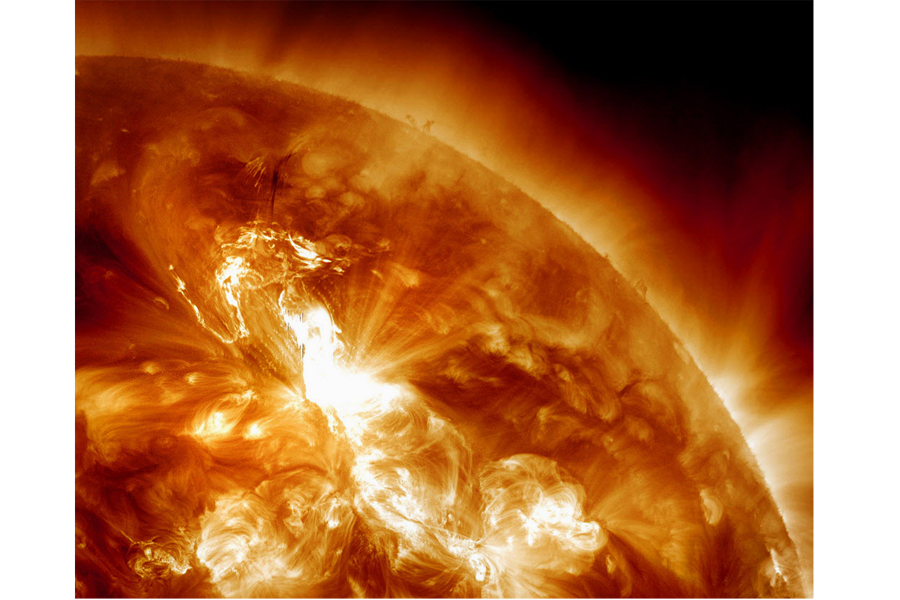Why scientists say our sun could unleash humongous 'superflare'
Scientists say that a binary star 1,500 light years from Earth may offer lessons in mega solar flares closer to home.
In the study, scientists determined that the physical oscillation that occurs during stellar flares, in which arcs of stellar matter periodically burst from their home star, “could be the same as those in solar flares,” according to the study’s abstract. The study was published in October in the Astrophysical Journal.
“To give us a better indication of whether the Sun could produce a catastrophic superflare, we need to determine whether the same physical processes are responsible for both stellar superflares and solar flares,” study lead author Chloë Pugh said in a press release.
The research team investigated this possibility by researching the binary star KIC9655129. The physics underlying the star’s superflares are similar to the sun’s solar flares, which suggests that the Earth's sun holds the potential for also producing a superflare.
Normal solar flares produce the energy equivalent of 100 million megaton bombs, but a solar superflare would be the energy equivalent of 100 billion megaton bombs. This would be enough to produce significant disruptions in the Earth's electrical and communications infrastructure.
“If the Sun were to produce a superflare … our GPS and radio communication systems could be severely disrupted and there could be large-scale power blackouts as a result of strong electrical currents being induced in power grids,” Ms. Pugh said.
The last time a solar flare approaching the magnitude described happened was in 1859. Called the Carrington event after Richard Carrington, the solar astronomer who first observed the phenomenon, that solar event released a mass of physical gas and radiation that lit up the Southern Hemisphere. The plasma pulsating through the atmosphere at the time was so strong that they disrupted telegraph communications, then a still-nascent technology.
However, Pugh acknowledged that while it is possible a tremendous solar flare could occur, it is not likely. The chances are also very low that any solar flare of this level could be aimed at Earth.
“[T]he conditions needed for a superflare are extremely unlikely to occur on the Sun, based on previous observations of solar activity,” Pugh said.







